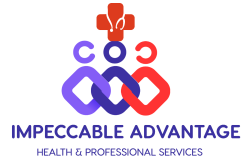Introduction
Individuals with disabilities represent a capable, skilled workforce—yet employment barriers persist. According to the U.S. Bureau of Labor Statistics, the 2024 employment–population ratio for people with disabilities was just 22.7%, compared to 65.5% for those without . Understanding the employment gap and available support systems is key to fostering inclusive work environments that benefit individuals and businesses alike.
1. Employment Trends & Challenges
- Low participation rates: Only 22.7% of people with disabilities were employed in 2024, compared to 65.5% of those without disabilities .
- Higher unemployment: The unemployment rate for this group was 7.5%, roughly double the rate of their nondisabled peers .
- Part-time work more common: People with disabilities are nearly twice as likely to work part‑time (31%) versus those without (17%).
These disparities reflect systemic challenges including accessibility barriers, limited accommodations, and bias in hiring and advancement.
2. Work-Ready: Skills & Self-Employment
Despite obstacles, individuals with disabilities often demonstrate entrepreneurial spirit—9.2% were self-employed in 2024, compared to 6.0% of others. This highlights their adaptability, resilience, and potential as contributors to the economy.
3. Support Programs & Employment Pathways
🎯 Vocational Rehabilitation & Ticket to Work
U.S. programs like Vocational Rehabilitation and Ticket to Work support those who want to return to work, offering training, coaching, and employer matching.
🛠 Supported & Customized Employment
Programs such as supported employment in Canada and the U.S., and customized employment, tailor jobs to individuals’ strengths—pairing them with coaches who provide ongoing support.
🌐 Employer Incentives & Federal Inclusion Efforts
Initiatives like Schedule A hiring authority for federal roles, subsidy programs in Europe and Asia, and business incentives in Singapore help bridge employment gaps.
4. Inclusive Workplace Strategies
True inclusion goes beyond compliance. Key strategies include:
- Accessibility audits & accommodations: Workspaces, software, and tools should support all employees .
- Inclusive hiring & recruitment: Accessible job postings, alternative interview formats, and talent-partnering with disability organizations.
- Employee training & culture change: Disability etiquette training and resource groups foster authentic inclusion.
- Career development pathways: Mentorship and promotion programs build leadership among employees with disabilities .
5. Proving the Value of Inclusion
Inclusion drives more than compliance—it drives results:
- Tighter labor markets have elevated employment for people with disabilities to record post-pandemic high.
- Improved outcomes for employers: Organizations prioritizing inclusion report higher engagement, innovation, talent retention, and diversity on leadership teams .
6. Where to Find Help & Resources
Useful organizations and resources include:
- U.S. Vocational Rehabilitation & Ticket to Work for career support.
- Job Accommodation Network (JAN) for workplace accommodations and training for employers .
- Think Beyond The Label and similar advocacy groups offering employer–disability job-matching platforms.
- Local government and nonprofit supported employment programs, including those in Asia, Canada, and the U.S. .
Conclusion
Employment for individuals with disabilities is not just a rights issue—it’s a smart investment in societal and business strengths. Closing the employment gap means:
- Expanding vocational supports and tailored job placements.
- Redesigning workplaces and recruitment processes for accessibility.
- Building inclusive cultures where every individual is valued and supported.
By doing so, we not only uplift individuals with disabilities but enrich our workforce with diverse talents and perspectives.

